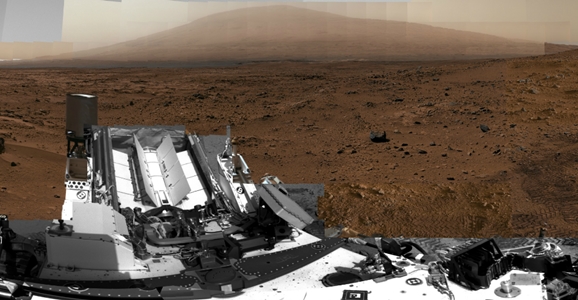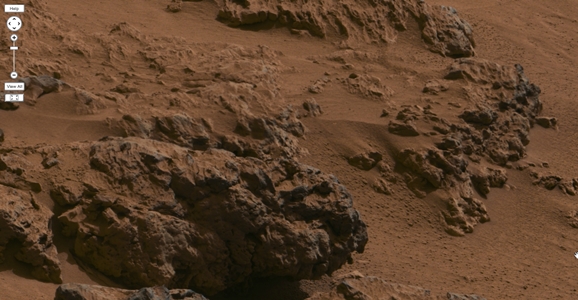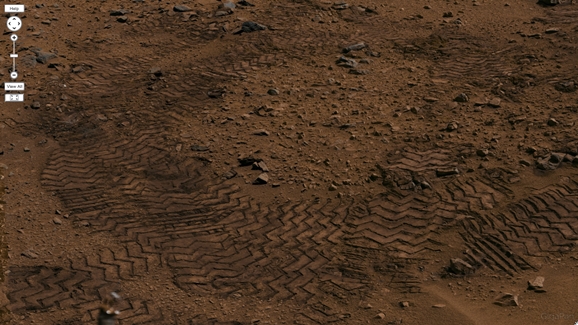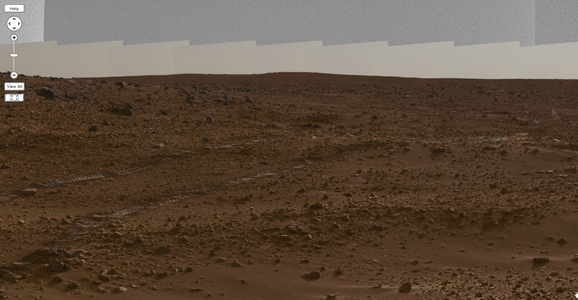NASA’s Billion-Pixel Mars Panorama Shows The Red Planet In Amazing Detail
This article is more than 2 years old
NASA’s Curiosity rover has been providing plenty of amazing images from the Red Planet for armchair astronauts such as myself to pore over. But while we’ve seen tons of looks at Curiosity’s path across Mars so far, NASA just raised their game by releasing a 1.3 billion-pixel interactive panorama of Curiosity’s Martian surroundings. Yes, that’s billion with a b.
In this first shot, you can see Aeolis Mons, or “Mount Sharp,” looming in the distance to the southeast of the rover. The image below is zoomed out around two-thirds of the way, so you can see Curiosity in the foreground. At full zoom, you can clearly make out ripples in the sand on the side of the mountain. (You can click all the below images for larger versions.)
The panorama is impressive enough as a still image, but once you start zooming is when your jaw will really hit the floor. in you keep expecting it to hit max zoom. but then it just keeps pushing in further and further. Rocks and dust have never looked this good. Here’s a patch of the landscape, zoomed nearly all the way in.
It’s also very cool to see the crisscrossing swirls of Curiosity’s tracks showing how it was maneuvered around Rocknest during the rover’s stay in the area.
You can even see the tracks stretching off into the distance, marking her path from Bradbury Landing.
The interactive panorama was created by combining some 900 pictures shot by Curiosity’s cameras. The images give us a sharp look at a stretch of Martian sand dubbed “Rocknest,” where Curiosity performed analysis of Martian soil last October. The various shots were taken between Oct. 5 and Nov. 16, 2012, and reflect various types of lighting and clarity since they were taken at different times. It’s definitely worth clicking over to NASA’s site to play around with the interactive panorama. It’s the closest most of us will likely ever get to exploring the Red Planet for ourselves.
















